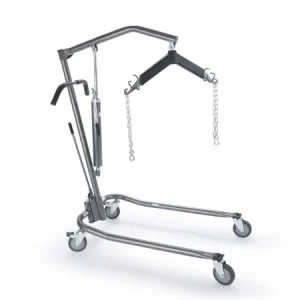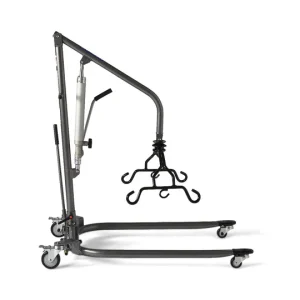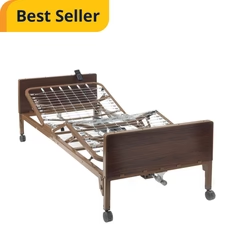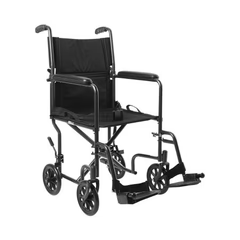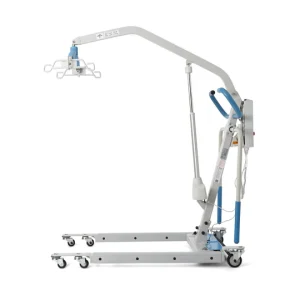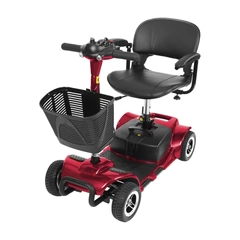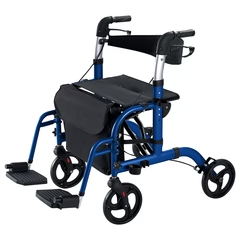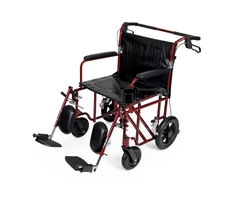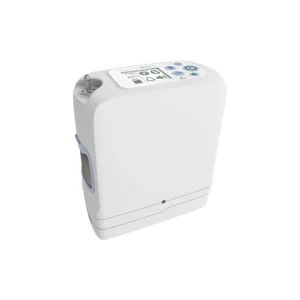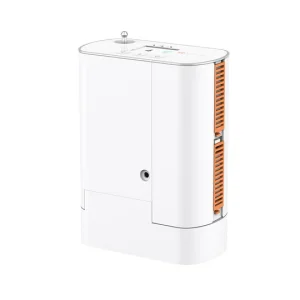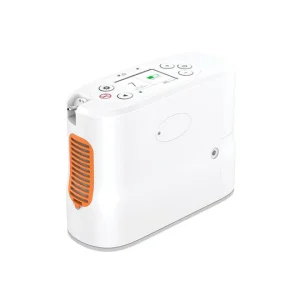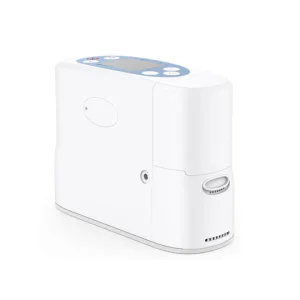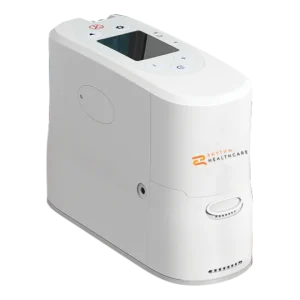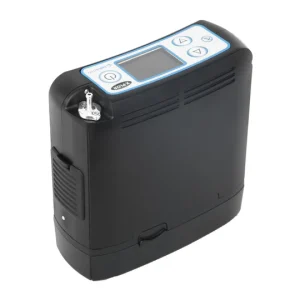Buyers Guide
Choosing the right medical equipment can feel overwhelming. That’s why we created the AmeriCare Buyers Guide. Each section explains the key features, differences, and benefits of various products, helping you compare options with confidence. Whether you’re buying for yourself, a loved one, or a patient, this guide is designed to make your decision easier and ensure you select the best solution for your needs.
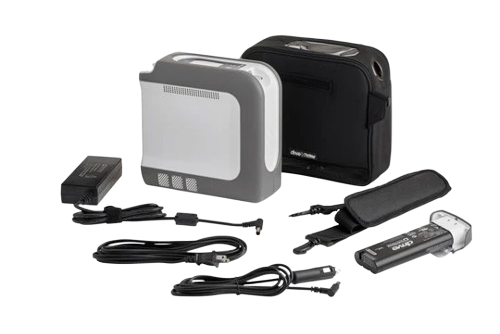
Mobility Aids Buyer’s Guide
Choosing the right mobility aid can make daily life more comfortable, safer, and more independent. Whether you are recovering from an injury, managing a chronic condition, or simply want more support, this guide will help you understand your options and make the best choice. At AmeriCare, we provide equipment and guidance to help you feel confident in selecting what fits your needs.
Walkers provide stability and are ideal for individuals who need significant support while walking. They are especially useful for people with balance concerns or those recovering from surgery. Standard walkers are lightweight, foldable, and easy to maneuver indoors. Some come with two front wheels, making it easier to glide forward without lifting the entire frame.
Best for: Short distances, indoor use, and maximum stability.
Rollators are walkers with wheels on all legs, hand brakes, and often a built in seat. They are excellent for individuals who can walk but need occasional rest or support. Rollators are more versatile outdoors than standard walkers and allow smoother movement across various surfaces. The seat is a helpful feature if you tire easily.
Best for: People who want mobility plus the option to sit and rest during longer outings.
Canes are perfect for people who need light assistance with balance or stability. They come in single point designs for mild support or quad canes with four feet for extra stability. Adjustable height options make them easy to fit to your body.
Best for: Mild balance support and everyday mobility assistance.
Transport chairs are lightweight, foldable chairs designed to be pushed by a caregiver. They are not meant for self propulsion but are great for travel and short trips. Many fold compactly for easy storage in a car trunk.
Best for: Occasional outings with the help of a caregiver.
Power wheelchairs give full independence to people who have limited strength or endurance. They operate using a joystick or other controls and can be customized with advanced seating, tilt, and recline features. Power wheelchairs are usually best for people who use a mobility aid throughout most of their day and need long term support.
Best for: Daily independent mobility both indoors and outdoors, especially when manual propulsion is not possible.
Mobility scooters are great for individuals who can transfer in and out of a seat but need help traveling longer distances. Scooters are battery powered and come in three or four wheel designs. They are comfortable, user friendly, and often disassemble or fold for transport.
Best for: Longer outings, errands, and active lifestyles where distance is a concern.
Knee walkers, also called knee scooters, are designed for people recovering from foot or ankle injuries. The injured leg rests on a padded platform while the other leg propels the device forward. They offer more comfort and mobility than crutches and allow hands free use when stopped.
Best for: Temporary recovery from lower leg injuries when you want an alternative to crutches.
Think about your lifestyle and where you plan to use the aid most often. Indoor use may call for a standard walker or cane, while outdoor activities may be easier with a rollator, scooter, or power wheelchair. Consider your upper body strength, balance, and endurance. Finally, talk with your healthcare provider to ensure you are selecting the safest option for your needs. AmeriCare is here to help guide you through this process and provide quality equipment you can rely on.
Compression Therapy Buyer’s Guide
Compression therapy products are designed to improve circulation, reduce swelling, and provide comfort for people dealing with conditions like lymphedema, venous insufficiency, or post surgical recovery. The right product can help manage symptoms, support healing, and improve quality of life. This guide introduces the most common types of compression therapy equipment so you can make an informed decision. AmeriCare offers options and support to help you choose what fits your needs.
Compression stockings are one of the most common solutions for everyday use. They come in different lengths including knee high, thigh high, and pantyhose styles. Stockings apply gentle pressure to the legs to support blood flow and reduce swelling. They are available in a variety of compression levels measured in millimeters of mercury (mmHg) and should be selected based on your doctor’s recommendation.
Best for: Daily wear to manage swelling, varicose veins, or mild circulation concerns.
Compression wraps are adjustable alternatives to stockings. They use overlapping fabric bands secured with Velcro, which makes them easier to apply and remove. Wraps are a good choice for individuals who have difficulty putting on stockings or who need adjustable compression during the day.
Best for: People who need flexible, adjustable compression that is easier to manage than stockings.
Compression pumps use an electric device to inflate garments worn on the legs or arms. The pump cycles through inflation and deflation to encourage circulation and move fluid out of affected areas. These devices are often prescribed for lymphedema management or severe venous disease.
Best for: Advanced cases where manual compression is not enough or when directed by a healthcare provider.
For individuals with swelling in the arms or hands, compression sleeves and gauntlets offer targeted support. These are often used after breast cancer treatment or for upper body lymphedema. Like stockings, they come in different compression strengths and sizes.
Best for: Managing swelling and circulation issues in the arms or hands.
The right compression therapy product depends on your condition, your daily routine, and your physician’s guidance. It is important to select the correct compression level and size for safe and effective results. AmeriCare is here to provide quality compression therapy solutions along with the guidance you need to feel comfortable using them.
CPAP and Sleep Therapy Buyer’s Guide
Sleep therapy products are designed to treat sleep apnea and other breathing related sleep disorders. Using the right equipment helps improve sleep quality, reduce health risks, and support overall well being. This guide explains the most common types of CPAP and sleep therapy equipment so you can understand your options. At AmeriCare, we offer solutions that make therapy more comfortable and effective.
A CPAP machine provides a constant stream of pressurized air through a mask to keep the airway open during sleep. Modern CPAP devices are compact, quiet, and often feature built in humidifiers and data tracking to monitor therapy progress.
Best for: Standard treatment of obstructive sleep apnea with consistent air pressure.
BiPAP, or bilevel positive airway pressure, delivers two levels of air pressure. A higher pressure is used when inhaling and a lower pressure when exhaling. This makes breathing more comfortable for people who have trouble exhaling against continuous pressure.
Best for: Individuals with more complex breathing disorders or those who cannot tolerate standard CPAP.
Auto CPAP devices automatically adjust air pressure throughout the night based on breathing patterns. This can improve comfort and ensure the user always receives the right level of support.
Best for: People who need variable pressure support or who want a more customized therapy experience.
Masks are available in several designs including nasal pillows, nasal masks, and full face masks. The right mask depends on your sleeping position, comfort preferences, and whether you breathe through your nose or mouth. Fit and comfort are critical for successful therapy.
Best for: Ensuring consistent use of CPAP or BiPAP therapy with minimal leaks and maximum comfort.
Accessories such as heated humidifiers, tubing, replacement filters, mask cushions, and cleaning supplies keep therapy comfortable and equipment functioning properly. Regular replacement of parts is important for hygiene and performance.
Best for: Supporting long term success and making therapy easier to maintain.
Travel sized CPAP machines are lightweight, portable, and designed to meet airline requirements. They help users stay consistent with therapy even while on the go.
Best for: People who travel frequently and want to maintain uninterrupted therapy.
The right sleep therapy setup depends on your diagnosis, comfort needs, and lifestyle. Working with your physician will determine whether you need CPAP, BiPAP, or auto adjusting therapy. From there, selecting the right mask style and accessories ensures comfort and compliance. AmeriCare is here to provide trusted equipment and support so your sleep therapy works for you.
Wound Care Buyer’s Guide
Wound care products are designed to support healing, protect against infection, and provide comfort during recovery. Choosing the right dressing or support product depends on the type of wound, the level of drainage, and the stage of healing. This guide introduces the most common wound care categories so you can understand the options available. AmeriCare provides reliable supplies to help you manage wounds safely and effectively.
Gauze pads and rolls are the most familiar wound dressings. They are versatile, absorbent, and can be used for a variety of wounds. They may require frequent changes and are often combined with medical tape or bandages to secure them in place.
Best for: General wound coverage, cleaning, and short-term use.
Foam dressings are soft and absorbent. They are designed to handle wounds with moderate to heavy drainage while keeping the surrounding skin protected. These dressings also provide cushioning, which helps reduce discomfort.
Best for: Moderate to heavily draining wounds that need protection and comfort.
Hydrogel dressings add moisture to dry wounds and help soothe pain. They are available as sheets, gels, or impregnated dressings. Hydrogels are especially useful when hydration is needed to support healing.
Best for: Dry or painful wounds that require moisture and comfort.
Alginate dressings are made from seaweed fibers that form a gel when they come into contact with wound fluid. They are highly absorbent and ideal for wounds with heavy drainage.
Best for: Heavily draining wounds that need strong absorption and protection.
Film dressings are thin, clear sheets that protect wounds from contaminants while allowing oxygen exchange. They help keep the wound visible and are often used as secondary dressings.
Best for: Lightly draining wounds or as a protective cover over primary dressings.
Collagen dressings promote tissue growth and help wounds progress through the healing stages. They are often used for chronic or stalled wounds that need extra support.
Best for: Chronic or non healing wounds that require advanced healing support.
The right wound care solution depends on the wound type, the amount of drainage, and your healthcare provider’s guidance. In general, wounds heal best in a moist, protected environment with dressings suited to the level of drainage. AmeriCare offers a full range of wound care supplies and can provide guidance to help you choose the safest and most effective option.
Bathroom Safety Buyer’s Guide
Bathrooms can be one of the most challenging areas of the home when it comes to safety. Slippery surfaces, tight spaces, and limited support can increase the risk of falls. Bathroom safety products are designed to provide stability, comfort, and independence. This guide highlights the most common equipment so you can choose what best fits your needs. AmeriCare offers trusted solutions to help make your bathroom a safer place.
Grab bars provide secure handholds for balance and support. They can be installed near toilets, showers, or bathtubs to reduce the risk of slips and falls. Available in various lengths and finishes, grab bars can be permanent or suction mounted depending on your needs.
Best for: Extra stability when sitting, standing, or moving in and out of the shower or tub.
Shower chairs and bath seats allow users to sit while bathing. They are sturdy, adjustable in height, and often come with slip resistant feet. Some models include backrests or armrests for additional comfort.
Best for: Individuals who have difficulty standing for long periods or want added comfort during bathing.
Transfer benches extend outside the bathtub or shower, allowing users to sit and slide in safely. This reduces the need to step over high bathtub walls and lowers the risk of falls.
Best for: People with limited mobility who need a safe way to get in and out of the tub or shower.
Raised toilet seats add height to the toilet, making it easier to sit and stand. They come in different heights and can be secured with clamps or brackets for stability.
Best for: Individuals who have trouble bending or lowering themselves onto a standard toilet.
Commodes are portable chairs with built in toilet seats and removable buckets. They can be placed bedside or used over an existing toilet. Folding and wheeled models are also available for convenience.
Best for: People who have limited mobility or need quick access to a toilet option outside the bathroom.
Non-slip mats provide extra grip in showers, tubs, and on wet floors. Safety flooring with textured surfaces is another option to reduce slipping hazards.
Best for: Preventing slips in areas where water may collect on the floor.
The right products depend on your home setup, mobility level, and comfort needs. Consider where you feel most unsteady in the bathroom and start with equipment that adds stability in those spots. AmeriCare can help guide you to the right combination of products to improve safety and confidence in your bathroom.
Bariatric Equipment Buyer’s Guide
Bariatric equipment is designed to provide comfort, support, and safety for individuals who need higher weight capacities and larger dimensions than standard medical equipment offers. These products ensure durability while maintaining ease of use and independence. This guide introduces the most common categories of bariatric equipment. AmeriCare supplies dependable options to help you feel confident in your daily care.
Bariatric hospital beds are wider, sturdier, and designed to support higher weight limits. Many include powered height adjustments, head and foot elevation, and reinforced frames. Some models also feature advanced pressure relief surfaces to prevent skin breakdown.
Best for: Individuals who require long term bed use with extra space, strength, and comfort.
Bariatric wheelchairs have wider seats, reinforced frames, and higher weight capacities than standard models. They are available in both manual and power options, with adjustable features for comfort and mobility.
Best for: Providing safe and reliable seated mobility for larger body types.
These mobility aids are designed with stronger frames and wider spacing to support higher weight limits. Many bariatric rollators include oversized padded seats and heavy duty wheels for smooth movement.
Best for: Stable walking support for individuals who need wider and stronger equipment.
Bariatric commodes have larger seat openings, reinforced armrests, and higher weight capacities. They are available in bedside or over the toilet designs, offering stability and comfort for daily use.
Best for: Safe and comfortable toileting with extra space and support.
Lift chairs provide powered assistance to help users stand up and sit down more easily. Bariatric lift chairs feature reinforced construction and wider seating areas while still offering multiple recline positions.
Best for: Comfort and independence for individuals who need extra support when standing or sitting.
These devices assist caregivers in safely transferring individuals from bed to chair or other locations. Bariatric lifts are built to handle higher weight capacities and come in manual or powered designs.
Best for: Safe transfers for individuals who require caregiver assistance.
The right bariatric equipment depends on your daily routine, mobility needs, and comfort preferences. Consider the spaces in your home and the type of support that would make the biggest difference. AmeriCare provides a full range of bariatric solutions and can help you choose equipment that combines safety, durability, and comfort.
Incontinence Buyer’s Guide
Incontinence products are designed to provide comfort, dignity, and confidence for individuals managing bladder or bowel control issues. With the right supplies, daily life becomes easier and more comfortable. This guide introduces the most common types of incontinence products so you can find what works best for your needs. AmeriCare provides reliable solutions and caring support to help you choose confidently.
Briefs, sometimes called adult diapers, offer full coverage and high absorbency. They feature adjustable tabs for a secure fit and are available in a wide range of sizes. Many are designed with odor control and leak guards for added protection.
Best for: Moderate to heavy incontinence or overnight use.
Protective underwear, also known as pull ups, look and feel more like regular underwear. They are easy to pull on and off and provide discreet protection.
Best for: Active individuals who want comfort, discretion, and light to moderate absorbency.
Pads and guards are smaller products designed to fit inside regular underwear. They are thin, absorbent, and disposable, making them a discreet option for lighter needs.
Best for: Mild incontinence and daytime use with discretion.
Bed pads protect mattresses, furniture, and car seats from leaks. They are available in disposable and washable options. Underpads are especially helpful at night or when sitting for long periods.
Best for: Added protection for beds, chairs, and other surfaces.
Managing incontinence often requires protecting the skin. Barrier creams, wipes, and cleansers help prevent irritation and maintain skin health.
Best for: Daily care to keep skin clean, protected, and healthy.
Washable briefs, bed pads, and underwear are available for those who prefer eco friendly and cost effective options. They provide absorbency while reducing waste.
Best for: Individuals who want sustainable alternatives to disposable products.
Choosing the right incontinence solution depends on the level of absorbency you need, your activity level, and your personal comfort preferences. Consider when and where you need protection most, whether during the day, at night, or both. AmeriCare offers a full range of incontinence products along with guidance to help you select the option that best supports your lifestyle.
Hospital Beds Buyer’s Guide
Hospital beds provide comfort, safety, and support for individuals who need extended care at home. Unlike standard beds, they feature adjustable frames, specialized mattresses, and accessories that improve both patient well being and caregiver efficiency. Choosing the right hospital bed depends on the patient’s mobility, level of care required, and the home environment. This guide explains the main hospital bed options and accessories. AmeriCare provides a full range of hospital beds to support your care needs.
Manual hospital beds are adjusted using hand cranks at the foot or side of the bed. The cranks control the head, foot, and sometimes the overall bed height. These beds are durable and cost effective but require caregiver effort to operate.
Best for: Short term care or situations where adjustments are infrequent and budget is a concern.
Semi electric beds combine powered and manual adjustments. The head and foot sections are controlled by a handheld remote, while the overall height is adjusted manually. This makes them easier to use than manual beds while remaining affordable.
Best for: Patients who need frequent head and foot adjustments but do not require full height control.
Full electric beds allow all adjustments, including height, to be controlled with a remote. They make repositioning easy and reduce physical strain on caregivers. Many models also offer emergency battery backup to ensure safety during power outages.
Best for: Long term care, patients who require frequent repositioning, and caregivers seeking maximum convenience.
Bariatric beds are wider, reinforced, and designed to support higher weight capacities. They are available in full electric models and often pair with specialty mattresses.
Best for: Patients who need additional space, strength, and safety beyond what a standard bed can provide.
Accessories such as side rails, trapeze bars, and overbed tables increase safety and convenience. Side rails help with positioning and fall prevention, trapeze bars allow patients to assist with transfers, and overbed tables make eating, reading, or working in bed easier.
Best for: Enhancing safety, independence, and daily comfort for patients and caregivers.
The best hospital bed depends on the length of care, the patient’s mobility, and the level of caregiver support available. Manual beds are best for short term needs, semi electric beds balance convenience with affordability, and full electric beds provide maximum ease of use. Specialty mattresses and accessories further improve comfort and safety. AmeriCare offers a full range of hospital beds and can guide you in selecting the model that best meets your care needs.
Urinary Supplies Buyer’s Guide
Urinary supplies help individuals manage bladder health, recovery after surgery, or chronic conditions that affect urinary function. The right equipment supports comfort, independence, and dignity while also reducing the risk of infection. This guide introduces the most common types of urinary supplies to help you understand your options. AmeriCare provides trusted products and support to make this process easier.
Intermittent catheters are single use devices that drain the bladder on a schedule. They are inserted, used to empty the bladder, and then removed. Many are designed with hydrophilic or pre lubricated coatings to make insertion more comfortable.
Best for: Individuals who need bladder emptying throughout the day without a permanent device.
Indwelling or Foley catheters remain in place for longer periods and are held in position by a small balloon. They are connected to a drainage bag and are often used when continuous drainage is needed.
Best for: Patients who require long term bladder drainage under medical supervision.
External catheters, sometimes called condom catheters, fit over the outside of the body and connect to a drainage bag. They are non invasive and provide a comfortable option for some individuals.
Best for: Men who need an external solution for urinary management.
Drainage bags collect urine from indwelling or external catheters. They come in leg bag styles for daytime mobility and larger bedside bags for overnight use. Secure straps and anti kink tubing improve comfort and function.
Best for: Collecting and managing urine safely during daily activities and sleep.
The PureWick system offers external urinary collection devices for both women and men. The female PureWick wicks urine away from the body into a collection canister, while the male PureWick provides a similar non invasive alternative to traditional catheters. Both options reduce infection risk, improve comfort, and provide discreet continuous collection, especially for overnight use.
Best for: Male and female patients who want a non invasive alternative to catheters for continuous or overnight urinary management.
Supplies such as catheter insertion kits, securement devices, and skin care products help maintain hygiene and reduce infection risks. Proper cleaning and replacement schedules are essential for safety.
Best for: Supporting comfort, skin health, and infection prevention.
The right urinary solution depends on your health condition, your lifestyle, and your physician’s recommendations. Consider how often you need bladder management, whether you want a temporary or long term option, and the importance of discretion and comfort. AmeriCare offers a wide range of urinary supplies, including PureWick for both men and women, and is here to guide you toward the safest and most effective choice.
Oxygen Therapy Buyer’s Guide
Oxygen therapy supports individuals with conditions such as COPD, emphysema, chronic bronchitis, or other respiratory challenges. The way oxygen is delivered can make a big difference in comfort, independence, and overall quality of life. Delivery options include concentrators, cylinders, and portable systems, each designed to meet specific needs. This guide explains the main oxygen delivery methods and what to consider when choosing between them. AmeriCare provides dependable oxygen therapy solutions to help you breathe easier at home and on the go.
Oxygen concentrators pull in room air, filter out nitrogen, and deliver concentrated oxygen to the patient. They provide a continuous supply and never run out as long as they are connected to power. Concentrators are available in both stationary and portable models.
- Stationary Concentrators: Larger, powerful machines designed for home use. They deliver higher oxygen flows and are ideal for long term therapy.
- Portable Concentrators (POCs): Compact, lightweight units that run on rechargeable batteries, making them easy to carry and approved for air travel.
Best for: Individuals who need reliable, continuous oxygen at home and want the flexibility of portable options for outings or travel.
Oxygen cylinders are tanks filled with compressed oxygen. They are available in various sizes, from small portable canisters to large stationary tanks. Cylinders are paired with a regulator to control flow and deliver oxygen through tubing.
- Portable Cylinders: Small tanks that can be carried in a shoulder bag or cart for mobility.
- Stationary Cylinders: Larger tanks designed for extended use at home, usually paired with a stand or stationary base.
Best for: Backup oxygen supply, emergencies, or individuals who prefer a straightforward, portable solution.
Portable oxygen systems combine portability and convenience for active users. These may include smaller cylinders paired with oxygen conserving devices or lightweight portable concentrators that extend battery life.
Best for: Active individuals who need oxygen support during daily activities, errands, or travel.
- Nasal Cannulas: The most common delivery method, providing oxygen comfortably through small tubes in the nostrils.
- Oxygen Masks: Used for higher flow needs or when cannulas are not sufficient.
- Tubing and Connectors: Extend reach and provide flexibility for use throughout the home.
Best for: Ensuring safe, effective, and comfortable delivery of oxygen therapy.
The right system depends on your prescription, lifestyle, and mobility needs. Stationary concentrators are best for reliable home use, cylinders provide backup and portability, and portable systems support active lifestyles. Many patients use a combination for maximum flexibility. AmeriCare offers all major oxygen delivery systems along with accessories and guidance to ensure safe, effective therapy tailored to your needs.
Patient Care and Aids to Daily Living Buyer’s Guide
Aids to daily living are products designed to make everyday tasks easier, safer, and more comfortable. They support independence, reduce strain for caregivers, and improve quality of life for individuals with limited mobility, strength, or flexibility. This guide introduces the most common types of patient care and daily living aids. AmeriCare provides trusted products to help you or your loved one maintain independence at home.
Reachers and grabbers extend your reach to pick up items from the floor, retrieve objects from high shelves, or avoid unnecessary bending. They are lightweight and easy to use.
Best for: Increasing independence by reducing the need to bend, stretch, or strain.
Dressing aids include tools like button hooks, zipper pulls, and dressing sticks. These products help people with limited dexterity or mobility get dressed without assistance.
Best for: Individuals with arthritis, limited strength, or restricted movement.
Adaptive utensils, plate guards, and special cups make eating and drinking easier for individuals with limited hand strength or coordination. Non slip mats and weighted utensils are also available.
Best for: Supporting independence at mealtimes for people with reduced grip or control.
Long handled sponges, bath mitts, and no rinse cleansers provide safe, effective ways to bathe with less effort. Bathing aids help maintain hygiene while reducing fall risks in the bathroom.
Best for: Individuals who want more independence in personal hygiene tasks.
Raised toilet seats, toilet safety frames, and commode accessories help people use the bathroom safely and comfortably. They reduce strain and improve dignity in daily routines.
Best for: Safe and comfortable bathroom use for people with mobility challenges.
Pill organizers, timed dispensers, and easy open containers simplify medication routines. They help prevent missed doses and provide reminders for individuals with memory concerns.
Best for: Managing medications safely and consistently.
Items such as overbed tables, bed wedges, and positioning pillows improve comfort during rest or recovery. These aids can reduce pressure points and make caregiving easier.
Best for: Enhancing comfort and convenience in the home environment.
The best daily living aids depend on the tasks that are most challenging for you or your loved one. Start by identifying areas where support would increase safety or independence, then select products designed for those needs. AmeriCare offers a full range of aids to daily living and can help you choose practical solutions to make everyday life easier.
Personal Care and Prevention Buyer’s Guide
Personal care and prevention products help you maintain health, avoid complications, and support everyday comfort. These items are designed to promote good hygiene, protect skin, and prevent common issues that can develop with age, limited mobility, or chronic conditions. This guide highlights the most common personal care and prevention products. AmeriCare provides trusted supplies to keep you comfortable, confident, and proactive about your health.
Barrier creams, moisturizers, and antifungal treatments help protect the skin from dryness, irritation, or breakdown. Regular use supports skin health, especially for people with limited mobility or incontinence.
Best for: Maintaining healthy skin and preventing irritation or sores.
Cushions, mattresses, and overlays are designed to relieve pressure and reduce the risk of pressure injuries. They improve comfort for individuals who spend long periods sitting or lying down.
Best for: Preventing pressure sores for people with limited mobility.
No rinse shampoos, body washes, wipes, and oral care kits make personal hygiene easier for those with limited mobility or caregivers providing support. These products maintain cleanliness without requiring frequent trips to the bathroom.
Best for: Staying fresh and clean when regular bathing is difficult.
Non slip socks, bed rails, motion sensing lights, and floor mats reduce fall risks at home. These simple items add safety and peace of mind.
Best for: Reducing the risk of falls and injuries in daily routines.
Braces, supports, and orthotic devices help stabilize joints, relieve pain, and prevent further injury. They are commonly used for knees, wrists, backs, and ankles.
Best for: Supporting recovery and preventing strain or injury in daily activities.
Products such as blood pressure monitors, thermometers, and pulse oximeters allow you to track health at home. Monitoring helps with prevention and early detection of potential issues.
Best for: Staying proactive about health with convenient at home monitoring.
The right products depend on your health, lifestyle, and areas where you want extra support. Think about prevention first, whether that means protecting skin, reducing fall risks, or monitoring vital signs. AmeriCare offers a wide range of personal care and prevention products to help you take charge of your health every day.
Patient Lifts Buyer’s Guide
Patient lifts are essential tools for safely transferring individuals who have limited mobility. They reduce the physical strain on caregivers, lower the risk of falls, and improve comfort during daily routines. Whether used in the home or a care facility, lifts provide stability and dignity for patients while making caregiving safer. This guide explains the different types of patient lifts, how they work, and what to consider when selecting the right option. AmeriCare offers dependable lift solutions along with accessories to ensure safe and effective transfers.
Manual lifts use a hydraulic pump that caregivers operate with a hand lever. The patient is supported in a sling, and the caregiver raises or lowers the lift with the pump. Though powered by hand, these lifts are sturdy, cost effective, and easy to maneuver on wheels.
Best for: Homes or facilities where cost and reliability are priorities, and caregivers are comfortable with manual operation.
Electric lifts use a battery powered motor to raise and lower the patient with the push of a button. They require less physical effort from caregivers and often include safety features like emergency stop buttons. Batteries are rechargeable, and many models come with low battery alerts.
Best for: Frequent transfers, heavier patients, or caregivers who need a powered option to reduce strain.
Sit to stand lifts, also known as stand assist lifts, help patients who have some weight bearing ability transition from sitting to standing. They use a smaller sling or harness around the torso and are ideal for moving between a bed, chair, or commode. These lifts promote independence by encouraging patients to participate in the transfer.
Best for: Patients with limited but not complete mobility who can support some of their own weight.
Ceiling lifts are mounted on tracks fixed to the ceiling or walls. They save floor space and allow smoother transfers across rooms without pushing a mobile base. Overhead lifts can be manual or powered and are especially helpful in tight spaces.
Best for: Long term care environments, small spaces, or patients requiring frequent transfers with minimal strain on caregivers.
Mobile lifts are free standing units on wheels that can be moved from room to room. They are highly versatile and can be used with a variety of sling types for different transfer needs.
Best for: Homes or facilities that need flexibility and portability.
The sling is the supportive fabric that cradles the patient during the transfer. Different types include:
- Full Body Slings: Support the entire body, best for patients with no weight bearing ability.
- Toileting Slings: Designed with openings that make hygiene tasks easier.
- Standing Slings: Used with sit to stand lifts for partial weight bearing patients.
Other accessories include scale attachments to weigh patients during transfers and spreader bars that allow easier positioning.
Best for: Matching the patient’s needs with the safest and most comfortable transfer method.
- Always use the correct sling size and type for the patient.
- Check slings and straps regularly for wear and tear.
- Ensure the lift’s brakes, wheels, and batteries (if powered) are in good working order.
- Train caregivers on safe operation before use.
The right lift depends on the patient’s mobility level, weight, care environment, and frequency of transfers. Manual lifts are durable and affordable, powered lifts reduce caregiver strain, sit to stand lifts promote independence, and ceiling lifts save space while increasing convenience. AmeriCare provides a wide selection of lifts and slings, along with guidance to ensure transfers are safe, comfortable, and tailored to your needs.

